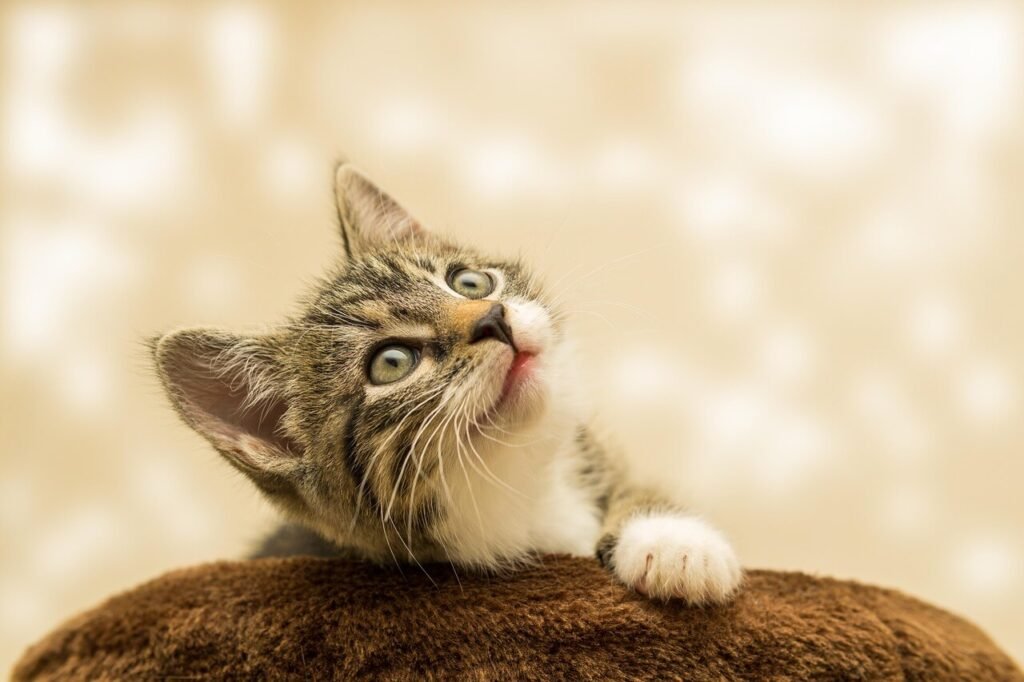SEO Keywords: cat body language, cat vocalizations, understanding cat behavior, how cats communicate, cat communication guide
🐱 Introduction
If cats could talk, what would they say? Well… they do talk—all the time. You just need to learn how to listen.
From tail flicks and ear twitches to chirps, yowls, and purrs, cats use a rich mix of body language and vocalizations to express themselves. Understanding these cues can help you deepen your bond, recognize their needs, and even prevent behavioral issues.
In this guide, we’ll decode your cat’s language, from their meows to their whiskers—plus recommend helpful products to improve communication and comfort in your cat’s world.
🧠 Why Understanding Cat Communication Matters
Cats are often labeled as “mysterious,” but most of their signals are easy to read once you know what to look for. Interpreting your cat’s mood and intent can help you:
- Know when they’re stressed, scared, or in pain
- Avoid unwanted behaviors like biting or scratching
- Build a stronger, more trusting relationship
🐾 Cat Body Language: What Their Movements Mean
🐱 Tail Talk
Your cat’s tail is one of the most expressive parts of their body. Here’s how to read it:
- Tail up, straight and relaxed = Happy, confident
- Tail twitching at tip = Curious or mildly irritated
- Tail puffed up = Frightened or angry
- Tail tucked under body = Scared or submissive
- Tail lashing side to side = Annoyed or agitated
🛒 Recommended product:
Feliway Optimum Cat Calming Diffuser – Helps reduce stress signals like tail flicking or aggression.
👀 Eye Contact and Blinking
- Slow blinking = Trust and affection
- Dilated pupils = Fear, excitement, or hunting mode
- Narrowed eyes = Relaxed or sleepy
- Staring with wide eyes = Threat or intense focus
🐾 Try This: Slowly blink back at your cat to show love and trust.
🐾 Posture and Body Position
- Arched back with fur raised = Startled or defensive
- Curled up, paws tucked under = Comfortable and safe
- Stretched out on side or back = Relaxed and confident
- Crouched low, ears flat = Fearful or ready to pounce
🛒 Comfort enhancer:
Best Friends by Sheri Calming Donut Bed – Helps cats feel safe enough to fully relax.
👂 Ear Signals
- Ears forward = Alert and interested
- Ears sideways or back = Annoyed or uncertain
- Ears flattened = Defensive or scared
If your cat’s ears are constantly shifting, they’re on high alert—pay attention to what’s causing it.
🗣️ Cat Vocalizations: What Different Sounds Mean
🐾 Meow
The classic cat sound! Interestingly, cats don’t meow much to each other—meowing is mostly for humans.
- Short meow = Greeting
- Mid-pitched meow = Request (usually food or attention)
- High-pitched or repeated meows = Excitement or demand
- Low-pitched growl-like meow = Complaint or disapproval
🛒 Interactive attention tool:
PetSafe Bolt Laser Cat Toy – Give your vocal cat fun distractions when they’re begging for play.
🐾 Purring
Not just a sign of contentment! Purring can mean:
- Relaxation and happiness
- Self-soothing when stressed or unwell
- A request for comfort or healing touch
📘 Fun fact: Some cats purr when they’re in pain—context matters!
🐾 Chirps and Trills
These sweet, bird-like sounds often mean:
- Excitement (e.g., bird watching from the window)
- A “follow me” call (especially from mothers to kittens)
- Friendly greeting
✅ Enhance the chirp-worthy view:
Frisco Window Perch for Cats – Gives your cat a front-row seat to the bird show.
🐾 Hissing and Growling
Clear warnings that your cat feels threatened:
- Hissing = “Back off!”
- Growling = Anger or serious discomfort
- Yowling = Territorial dispute or mating call (often in unspayed/neutered cats)
🛒 Solution:
Comfort Zone Multi-Cat Diffuser – Great for calming multi-cat households with territorial behavior.
🧴 Scents and Silent Signals
Cats also use scent as a powerful communication tool:
- Rubbing against you = marking you as “theirs”
- Scratching furniture = visual + scent marker
- Urine marking = stress or territory issue
🛒 Fix furniture marking with:
SmartyKat Scratch Not Training Spray
🧩 How to Improve Communication With Your Cat
🧠 Learn Their Patterns
Every cat is different. Spend time observing your cat’s daily moods and behaviors to build a “dictionary” of what their signals mean.
🗨️ Talk Back!
Cats respond to tone and body language. Use a calm, soothing voice—and blink slowly to show affection.
🛒 Enrichment suggestion:
Catit Senses 2.0 Interactive Play Circuit – Encourages confidence and curiosity through play.
🏠 Create a Safe Environment
An anxious cat will have more defensive or fearful signals. Reduce stress by:
- Maintaining a predictable routine
- Giving them vertical space (cat trees or shelves)
- Providing cozy hiding spots
🛒 FEANDREA Multi-Level Cat Tree – Great for climbing, hiding, and observation.
❤️ Final Thoughts
Learning to interpret your cat’s body language and vocal cues can completely transform your relationship. When you understand what your cat is trying to say, you’ll respond more appropriately—leading to a happier, more confident kitty.
Communication is a two-way street. The more you listen to your cat, the more they’ll trust and connect with you.

